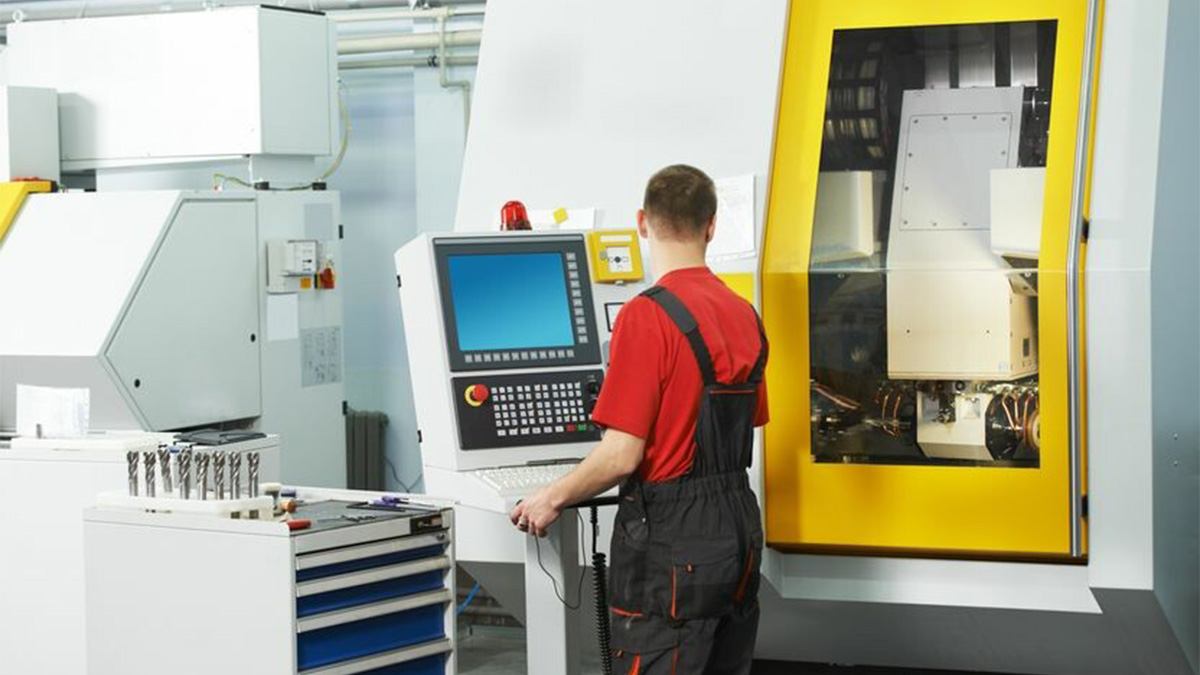Germany is the second-largest producer of machine tools in the world, after China. Advanced German machine tool technology has led the development of the machine tool market.
Machine Tool Market Overview in Germany:
In 2021, the output value of German machine tools was 11,011 million US dollars, of which 7,377 million US dollars was exported. 67.0% of the machine tools manufactured in Germany were exported. The value of imported machine tools was 2,255 million US dollars. This was 37.2% of Germany’s total machine tools consumption value of 6,061 million US dollars. Export growth rate reached 11.5%, with the top three export market countries of China, the United States, and Italy, accounting for 39.4% of exports.
Germany Machine Tool Domestic market:
Looking at the German domestic market, the automobile and component manufacturing industry is the industry leader in Germany, and about 45% of the global machine tool application field is in the automotive manufacturing industry. The changes in German machine tool consumption are closely related to the automobile industry.
Main Application Industries of Machine Tools:
-
Automobile manufacturing:
Germany's auto and component ecosystem includes thousands of companies with a complete upstream and downstream supply chain. Especially in the brand side and Tier 1 manufacturers, it is also the leader of the global auto industry, with brands including Mercedes-Benz, BMW, BOSCH, and other companies.
German car sales declined in 2021, with 2.62 million new vehicles registered throughout the year, a 10.1% decrease from 2020. However, the decline in non-market demand was mainly due to supply chain disruptions, especially the shortage of chips, which caused manufacturers to be unable to meet delivery orders. The market trend of the German automobile manufacturing industry over the past five years has been a decline in the output value and export value of fuel vehicles, while the sales of electric vehicles has grown significantly. At the same time, with the EU's plan to ban the sale of fuel vehicles in 2035, both Germany and Japan are developing new technologies for the fuel vehicle markets, and are focusing on biomass fuels to replace gasoline and diesel fuel produced from refined petroleum.
-
Semiconductor Industry:
In 2021, the German government planned to provide huge funds to solve the problem of semiconductor supply chain interruptions, allocating nearly 11 billion US dollars to attract semiconductor companies from various countries to set up factories in Germany and promote local production. The German Ministry of Economic Affairs has selected 32 investment plans for microelectronics-related industries, from upstream chip design, mid-stage chip production, packaging, and testing, to downstream electronic system integration. It is hoped that the EU's Important Projects of Common European Interest (IPCEI), can resolve the lack of chips and overseas dependence, and further resolve the problem of interruption of production in Germany's automobile manufacturing industry.
The German semiconductor industry is one of the top 10 in the world by revenue. Among them, the largest semiconductor factory in Germany is Infineon, which mainly develops chips for the automotive semiconductor market. Other semiconductor brands include NXP, Renesas, TI, and ST. In addition, electric vehicles use a lot of technology applications such as IoT, 5G, and AI, and the demand for high-power, third-generation semiconductors has also increased significantly. As Europe gradually attaches importance to the stability of semiconductor manufacturing and regional supply chains, and the government develops a related semiconductor factory subsidy bill, it is expected that more demand for semiconductor equipment will be created in the future.
-
Energy Industry:
The European Union is one of the most active regions in the world in promoting green energy. In recent years, the European Union has actively promoted the Carbon Border Adjustment Mechanism (CBAM) carbon emission management mechanism. It is expected that the CBAM policy will have a comprehensive impact on the global manufacturing industry and related supply chains. Initially, the carbon emissions from the production of steel, cement, fertilizer, aluminum, and electricity will be declared and controlled. From 2026, carbon emissions fees will be charged for designated commodities, and commodities exported from Europe will also be required to follow CBAM specifications.
Presently, machine tools used mainly in the automotive, aerospace and defense, electronics, and motor industries, account for about 3/4 of machine tools being used in Germany, with other industries accounting for the remaining 1/4.
It is estimated that over the next 10 years, the production of energy equipment for offshore wind power and large-scale energy storage systems will bring new market demand for machine tools. In addition, the energy system application market will gradually shift from oil and natural gas drilling equipment, storage/transportation devices, coal and fossil energy power generation systems, nuclear power generation systems, etc. to renewable energy power generation systems (solar, wind, biomass) and new forms of various advanced energy storage systems.
Analysis of the Development Trends of Machine Tool Technology:
Germany is the world leader in machine tool technology, and the development of German machine tool technology represents a future trend in machine tool technology. Most of the machine tools produced in Germany are high unit-price models. Due to technology-intensiveness, most German machine tools are directly sold to user manufacturers and machine tool manufacturers cooperate with these purchasers using interactive consulting services. Some machine tool manufacturers even set up training factories to show the characteristics and advantages of the products, providing an environment for potential customers to operate on a real machine.
-
Production line customization:
For end-users of machine tools, highly customized products with a variety of small variations have gradually become the norm. Therefore, machine tool manufacturers need to take necessary measures to meet customers' customized needs for processing technology, production equipment, and factory management.
-
Diversified smart functions:
Combining intelligent machine equipment with technologies such as sensing, communication networks, cloud computing, data analysis and simulation, machine learning, and decision assistance can realize pre-processing simulation, visualization of machine operation information, health status monitoring, predictive maintenance, tool management, automatic scheduling, and other functions.
- Process virtual and real-world integration:
Create a real-world object in the digital world, use it to perform various tests, and then send the object’s digital world data back to the real world.
Industry 4.0 Trends:
-
IoT system integration:
While collecting data, factories must integrate huge data with IT, and finally use and manage them. Related technologies include virtual-real integration and cloud computing, etc., which can be applied to predictive maintenance to improve production efficiency.
-
Independent production:
From automated manufacturing to machine learning self-optimization, independent production reduces outside interventions and provides flexibility for production lines. In the face of an aging society, with the labor force declining, independent production and automation will help keep industries in their own countries.
-
Digital clone:
Digital cloning allows one to manipulate photos, videos, and audio to create hyper-realistic videos and photos that are very difficult for the human eye to distinguish between what is real and what is fake. It is an emerging technology that will play an increasingly more important role in the production of physical products. By simulating results caused by different forms of input, this information can be used to optimize production line processes.
-
Information security and efficient use of energy:
Due to the increased integration of the physical world and the digital world, the flow of data has greatly increased, and the risks encountered in production chains has also increased, so more and more attention is being paid to information security issues. To achieve the goal of net-zero carbon emissions, improving energy efficiency has also become a trend.











.jpg)
.jpg)
.jpg)
